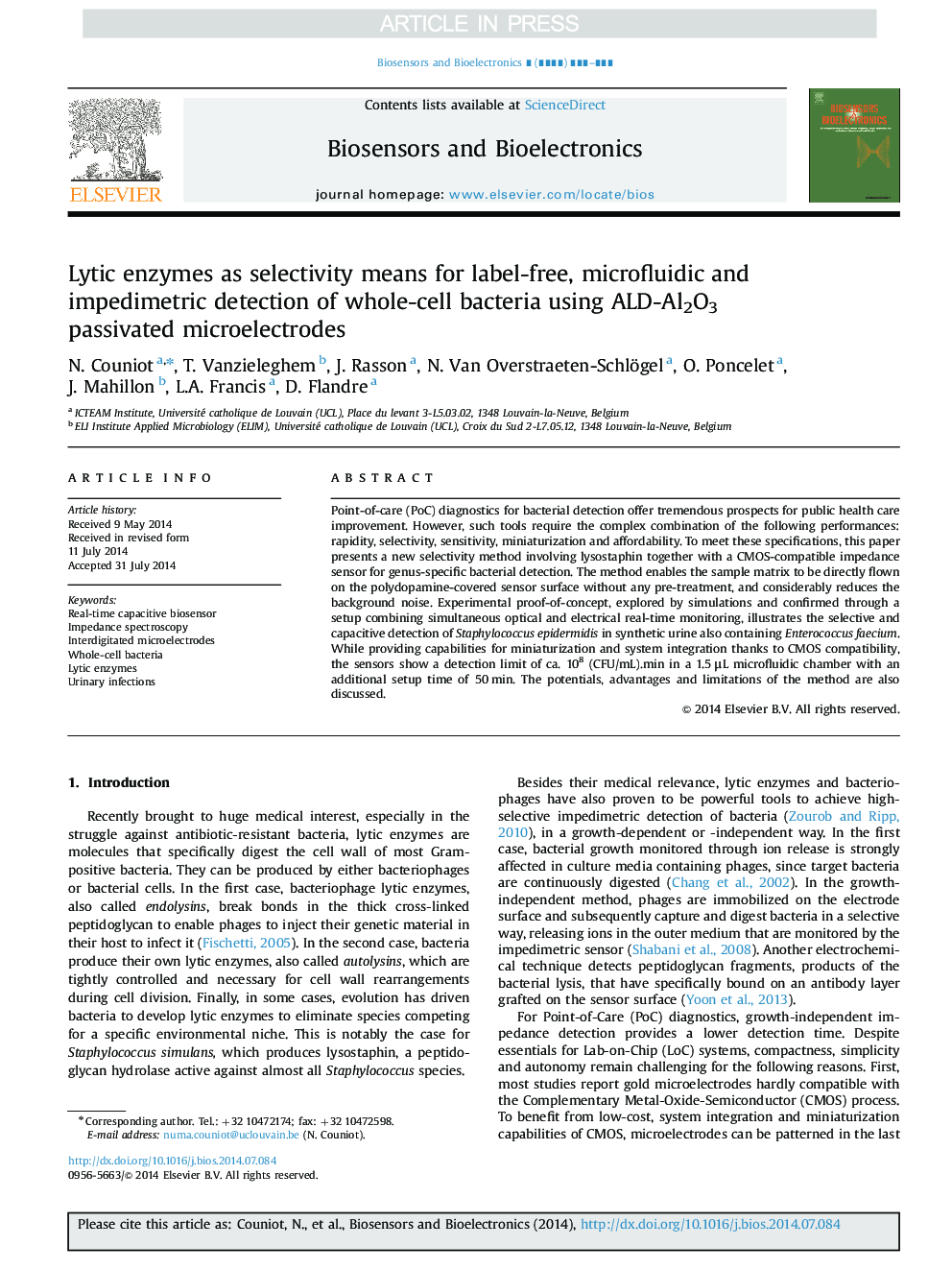| Article ID | Journal | Published Year | Pages | File Type |
|---|---|---|---|---|
| 7232444 | Biosensors and Bioelectronics | 2015 | 8 Pages |
Abstract
Point-of-care (PoC) diagnostics for bacterial detection offer tremendous prospects for public health care improvement. However, such tools require the complex combination of the following performances: rapidity, selectivity, sensitivity, miniaturization and affordability. To meet these specifications, this paper presents a new selectivity method involving lysostaphin together with a CMOS-compatible impedance sensor for genus-specific bacterial detection. The method enables the sample matrix to be directly flown on the polydopamine-covered sensor surface without any pre-treatment, and considerably reduces the background noise. Experimental proof-of-concept, explored by simulations and confirmed through a setup combining simultaneous optical and electrical real-time monitoring, illustrates the selective and capacitive detection of Staphylococcus epidermidis in synthetic urine also containing Enterococcus faecium. While providing capabilities for miniaturization and system integration thanks to CMOS compatibility, the sensors show a detection limit of ca. 108 (CFU/mL).min in a 1.5 μL microfluidic chamber with an additional setup time of 50 min. The potentials, advantages and limitations of the method are also discussed.
Related Topics
Physical Sciences and Engineering
Chemistry
Analytical Chemistry
Authors
N. Couniot, T. Vanzieleghem, J. Rasson, N. Van Overstraeten-Schlögel, O. Poncelet, J. Mahillon, L.A. Francis, D. Flandre,
